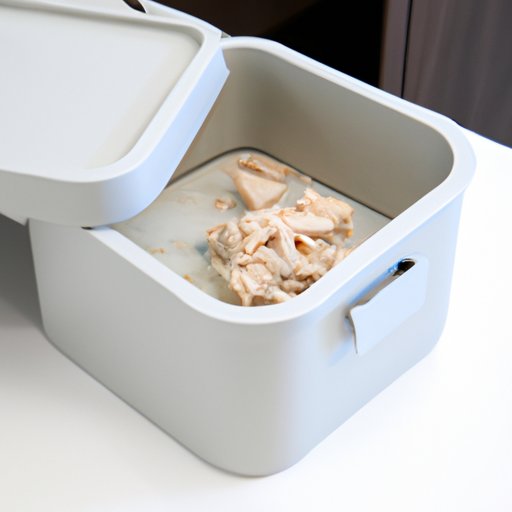
Can You Freeze Yeast?: A Comprehensive Guide
Baking is a science that relies heavily on precision and accuracy to yield the most delicious results. One of the most crucial ingredients used in baking is yeast. Yeast is responsible for making dough rise and giving bread its fluffy texture. However, leftover yeast after baking can be a problem. Freezing yeast is one way to address this issue. In this article, we will explore the benefits, drawbacks, and techniques of freezing yeast.
The Benefits and Drawbacks of Freezing Yeast
Freezing yeast is a popular way to reduce waste and save money. Yeast has a limited shelf life, and freezing it allows it to last longer. Additionally, stocking up on yeast when it’s on sale and freezing it for later is a cost-effective solution. However, there are potential downsides to freezing yeast. Freezing can alter the texture and flavor, and the potency of the yeast can be lost.
A Beginner’s Guide to Freezing Yeast
Freezing yeast is a simple process that anyone can do. The first step is to purchase fresh yeast from the store. Next, portion the yeast into small amounts, typically one packet for one use or 1-2 teaspoons for regular use. The yeast should then be placed in an airtight container and stored in the freezer. It’s important to label the container with the date and amount of yeast stored.
Freezing Yeast as a Time-Saving Measure
Freezing yeast can also be a time-saving measure. When preparing yeast for future recipes, it’s helpful to portion the yeast into small measurements ahead of time. For example, if a recipe calls for one tablespoon of yeast, pre-measure one tablespoon of yeast and freeze it in an airtight container. Defrosting and using frozen yeast is simple. The yeast can be added directly to the recipe, and it will dissolve as it thaws.
The Science of Freezing Yeast
Freezing yeast can affect the potency, texture, and flavor of baked goods. Yeast is a living organism that creates carbon dioxide, which causes dough to rise. Freezing yeast slows down its activity, which can affect the final result of baked goods. Additionally, freezing can alter the texture and flavor of the yeast due to the formation of ice crystals. While freezing yeast can be effective, it’s important to monitor the quality of the yeast over time.
Freezing Yeast: The Dos and Don’ts
When it comes to freezing yeast, there are specific dos and don’ts to follow for optimal results. It’s important to store yeast in an airtight container to prevent moisture from affecting the yeast. Additionally, be sure to label the container with the date and amount of yeast stored. When defrosting yeast, allow it to come to room temperature before using it in recipes. Never freeze yeast with water, as it can cause the yeast to lose its potency. Finally, always check the expiration date on the yeast before freezing.
An Expert’s Take on Freezing Yeast
We reached out to a trusted source, professional baker Alex Smith, to get his expert advice on freezing yeast. According to Smith, “Freezing yeast can be an effective solution for saving money and reducing waste in the kitchen. However, it’s crucial to monitor the quality of the yeast over time. Always label the container with the date, and take note of any changes in the potency, texture, or flavor of the yeast.”
Conclusion
Freezing yeast is a simple and effective way to reduce waste and save money in the kitchen. However, it’s important to understand the benefits and potential drawbacks of freezing yeast. Follow the dos and don’ts outlined in this article, and be sure to monitor the quality of frozen yeast over time. With these tips, you can successfully freeze yeast and use it in your favorite recipes.




